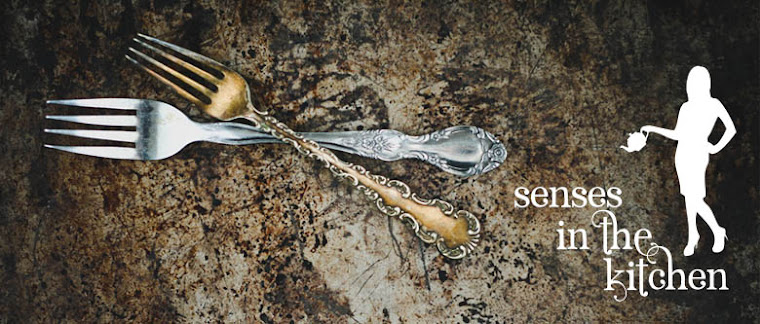
Have you ever wondered what makes a good cook? If you are good cook? Does following the recipes from a books so they turn up as nice as on the colourful pictures or trusting your intuition that some ingredients will work together (and thy do) makes a good cook? I still think I can't cook, have got so many things to learn and often wonder if in 10, 15, 20 years I will be able to say that I actually know how to cook and I do not need cookery books or magazines anymore.
Same dilemmas had the author of this book, asking herself if she really can cook and if the dozens of book were a symptom and a cause of her lack of kitchen confidence. Also some dinner did not help to pick her confidence up. Is was a dinner served by a friend that contained a dish using two ingredients it would never have occurred to her. She started to wonder how her friend knew that this is going to work and this is what forced her to look for something like a flavour thesaurus from which she could learn some flavour combinations. However she couldn't find it so she decided she might compile one herself.
Although Niki describes herself as an untidy person this book is incredibly legible, well composed and easy to use and to find information. It becomes really hand when you have some ingredient and you are unsure what it will go nicely with. After you read the introduction you can stick your finger anywhere in the book and find something interesting. This is not typical cook book however there are some recipes in it, but no pictures at all. What you find in this book are incredible almost poetic descriptions of flavours, their historical or cultural backgrounds - this book is packed with lots of information. This makes it enjoyable, relaxing read rather than a book that you would use when cooking, however the knowledge you acquire from it will certainly help you to become a better cook and understand how and why one flavour might go with another.
Segnit has taken 99 basic popular ingredients and grouped them in 16 sections such as roast (chocolate, coffee, peanut), meaty (chicken, liver, pork etc), earthy (cumin, mushrroms, beetroot), marine (caviar, white fish, oysters, shellfish), woodland (butternut squash, hazelnut, chestnut etc) and many more. She obviously omitted some such as courgettes and she apologies for it. First of all she did it because this book does not make any claims to be the last word on a subject. Secondly I think taste is such individual thing and she simply did not think that courgettes are so important.
Next she put them in 980 pairs. The total of possible combinations of 99 ingredients is nearly 5000, and if you think about adding third ingredient the number of possible combinations increases to over 150,000! Therefore adding extra ingredient would have made this book difficult to write and less enjoyable to read. Besides if you wish to make a trio of flavours you can work on those pairs already described in book and experiment with adding the third one basing on your knowledge how different the flavours work together.
What more should I add other than this book had stunning reviews in the national newspapers such as Sunday Times and Observer and my culinary guru - Heston Blumenthal describes it as an original and inspiring resource?
Since I started to read it I simply cannot get enough of it and feel like I discover new planets every time I read about new flavour combinations. Even if sometimes they are obvious for me, but even more if I disagree with the author (she finds chocolate with beetroot unattractive), but how flavour is so individual things, isn't it?

Niki Segnit "The Flavour Thesaurus"
Bloomsbury Publishing PLC, 2010
Hardcover, 400 pages

Thanks for this review. I've seen this book a couple of times and wondered about it. What you say seems to reflect what I think about being able to cook, and if it was before Christmas I'd definitely put it on my Christmas list!
ReplyDeleteI think it will be the next book I buy.
Thanks
Thanks for the review of this book. I hadn't heard of it before but it looks like it would be a fascinating and inspiring read. I'm going to go and look for this book - I'm intrigued!
ReplyDeleteAh I've wanted this book for ages. great review. Sadly, I've put myself on a new book ban this 2011 but hopefully it will turn up at my libary one day!
ReplyDeleteHello everyone! :)
ReplyDeleteI am glad you find this review helpful. I have to mention the discussion about it on Polish blog, as this would help you to make up your mind. Obviously taste is something very, very subjective; so many pairs described in this book might not be up to your taste. Also author could be wrong, so you should not trust her 100%, I am Polish so I can see that Niki repeated some stereotypes about Eastern or Central Europe food. Therefore this book is absolutely NOT an encyclopaedia. It is rather someone’s view on different foods and flavours. You may disagree totally with her and think this book is worthless. OK, I have found few things that disagree with me personally but in general I found it very helpful and inspiring.
Thanks for visiting my blog, hope to hear from you soon!